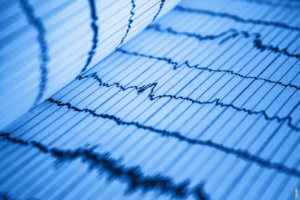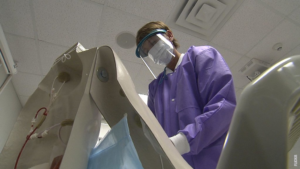The Intricate Network: Blood Vessels and the Heart
Blood circulation is a fascinating process that powers the human body, allowing it to function and thrive. At the center of this intricate network is the heart, a powerhouse organ that tirelessly pumps blood throughout the body.
A River of Life: Arteries, Veins, and Capillaries
The circulatory system is composed of arteries, veins, and capillaries, forming a complex network of blood vessels. Arteries carry oxygenated blood away from the heart to various organs and tissues, while veins transport deoxygenated blood back to the heart. Connecting these two major pathways are capillaries, the smallest and thinnest blood vessels.
The Pulmonary Circuit: Oxygenation and Deoxygenation
One of the most crucial aspects of blood circulation is the pulmonary circuit. It is responsible for oxygenating the blood and removing carbon dioxide. Oxygen-depleted blood from the body enters the right atrium of the heart and is then pumped into the right ventricle. From there, it is transported to the lungs through the pulmonary arteries.
The Systemic Circuit: Nourishing the Body
After receiving oxygen in the lungs, the blood re-enters the heart through the pulmonary veins and is pumped into the left atrium. It then travels to the left ventricle, which propels it into the aorta, the largest artery in the body. From the aorta, the blood is distributed to all parts of the body through a vast network of arteries, capillaries, and veins.
Heart’s Symphony: The Cardiac Cycle
The cardiac cycle is a rhythmic process that ensures the continuous circulation of blood. It consists of two main phases: systole and diastole. During systole, the heart contracts, pumping blood into the arteries. In diastole, the heart relaxes, allowing the chambers to refill with blood. This coordinated dance of contraction and relaxation allows for efficient blood circulation.
Post
Post
Regulating the Flow: Blood Pressure and Vessel Constriction
Blood pressure plays a vital role in maintaining proper blood circulation. It is the force exerted by circulating blood against the walls of blood vessels. To regulate blood pressure, the body employs various mechanisms, including vasoconstriction and vasodilation. Vasoconstriction narrows blood vessels, increasing blood pressure, while vasodilation widens them, reducing blood pressure.
The Journey Continues: Constant Renewal
Blood circulation is a continuous and dynamic process, with red blood cells traveling an estimated 12,000 miles per day. This incredible journey supplies oxygen, nutrients, and hormones to every cell in the body, while simultaneously removing waste products. It is a constant renewal, ensuring the body’s survival and optimal functioning.
Awe-Inspiring Complexity: The Miraculous System
The human body’s blood circulation system is truly awe-inspiring in its complexity. From the rhythmic beating of the heart to the intricate network of blood vessels, it is a marvel of engineering. Understanding how blood circulates allows us to appreciate the remarkable intricacies that enable our bodies to thrive and flourish.



